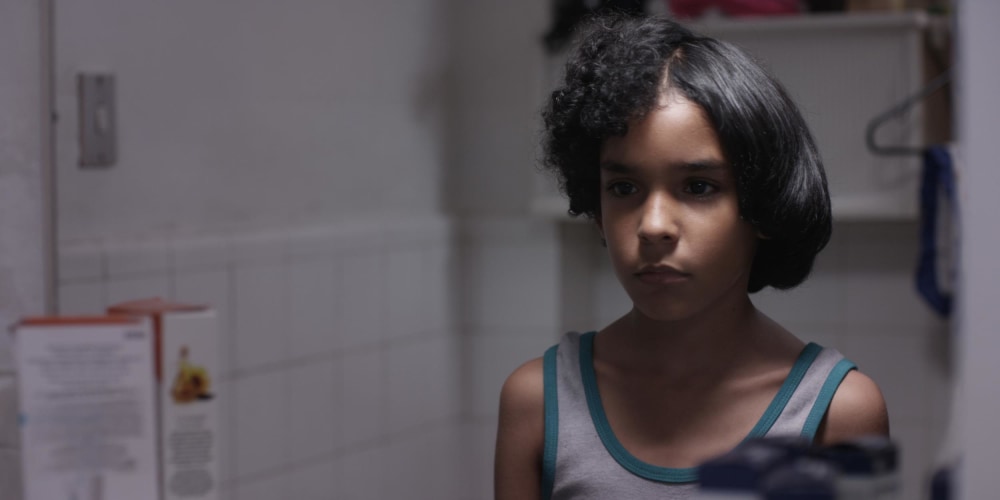El sánwich de Mariana is a an 11 minute short by Carlos Cuarón (brother of Alfonso!). The film is available on YouTube, and centers around the theme of school bullying. The film does not have English subtitles, but the students don´t need them to understand the message.
 |
| imdb.com |
I'd start the unit with students working in pairs to understand the information being communicated in the infografia and making a list of relevant vocabulary. Depending on the group, you might want to give them a few basic comprehension questions to help keep them focused, or you could have students write their own comprehension questions and answers! An extension of this idea: you could also use two different infografías in the class, and have groups switch and answer the comprehension questions written by the first group.
Next up: students work in small-groups to write a survey - using their new vocabulary - about acoso escolar. This can be done easily with a Google form, which can then be shared with other Spanish classes at your school to collect data. Google makes it easy to capture very cool graphics from a Google form, which your students can then include in a written activity summarizing their survey findings.
Now we can watch the film! I'd give the students a basic comprehension activity to complete while they are watching the film - perhaps a "put these events from the film in the order in which they occur" type activity, which also serves as additional comprehensible input for them. After viewing the film in class, I´d give pairs of students a list of questions to use as a spring-board for conversation about the film. A few ideas:
- Students put the characters in order of who bullies who, to point out the cause-and-effect relationship in bullying.
- A true/false activity where students have to correct the false statements.
- Basic conversation questions, such as ¿Cómo es la escuela de Mariana y Isabel? ¿Cómo es similar a la escuela primaria que Uds. asistieron? ¿Cómo es diferente? ¿Por qué Mariana no dice nada a su maestra sobre el acoso? ¿Para qué sigue Isabel a su casa? ¿Qué aprende Mariana sobre la familia de Isabel? ¿Cuáles insultos escuchas en el cortometraje? ¿Cuál es el peor, en sus opiniones? ¿Por qué? ¿Qué solución tiene Mariana para el problema de acoso escoloar? ¿Qué piensan Uds. de esta solución? ¿Puede funcionar? ¿Qué otras soluciones tienen Uds.? ¿Tiene el cortometraje un final abierto o cerrado? Explica. ¿Cuáles tipos de abuso denuncia este cortometraje? Den ejemplos. ¿Existen estos tipos de abuso en sus comunidades? Explica.
You could easily work several possible grammar tie-ins with this film: pretérito e imperfecto, with students narrating the events of the film and describing various elements - the school, the characters, etc. The future tense to make predictions about the relationship Mariana and Isabel is another easy one, or an activity contrasting por qué and para qué using the basic plot line of the short film. (¿Por qué es abusiva Isabel? ¿Para qué Mariana sigue Isabel a su casa? ¿Para qué le regala un sánwich Mariana a Isabel?) Here´s a quick explanation to help us make the distinction for our students.
Cyber bullying: The film El sánwich de Mariana is a great example of traditional in-person bullying, but it does not address the more modern version, which is ciberbullying. Again, you could find an infographic to build specific vocabulary related to to the topic, or many of the general bullying infographics also include information on cyber bullying. Here is a lesson that I created on cyber bullying that has students reading a brief text that I adapted from an on-line authentic resources, and then has them writing a written reflection on their experiences.
To finish the unit, I recommend using the Burger King ad from a few years ago as a springboard to having students writing their own public service announcement. Here is a link to the marketing company that created the ad. The video of the commercial is also accessible through that page. Have the students read this page either before or after viewing the add to get a bit of background on the marketing campaign (using yet another authentic resource!)
This commercial from Burger King can be a great spring-board to have students create their own public service announcements about bullying. These can be oral presentations that they record, or pamphlets they create. Here is a lesson that I created for my college-level conversation class, with grading criteria and a grammar tie-in to get them using Si clauses, which we were studying at the time.
What other activities could we include in this lesson?? Leave a comment with your ideas!

